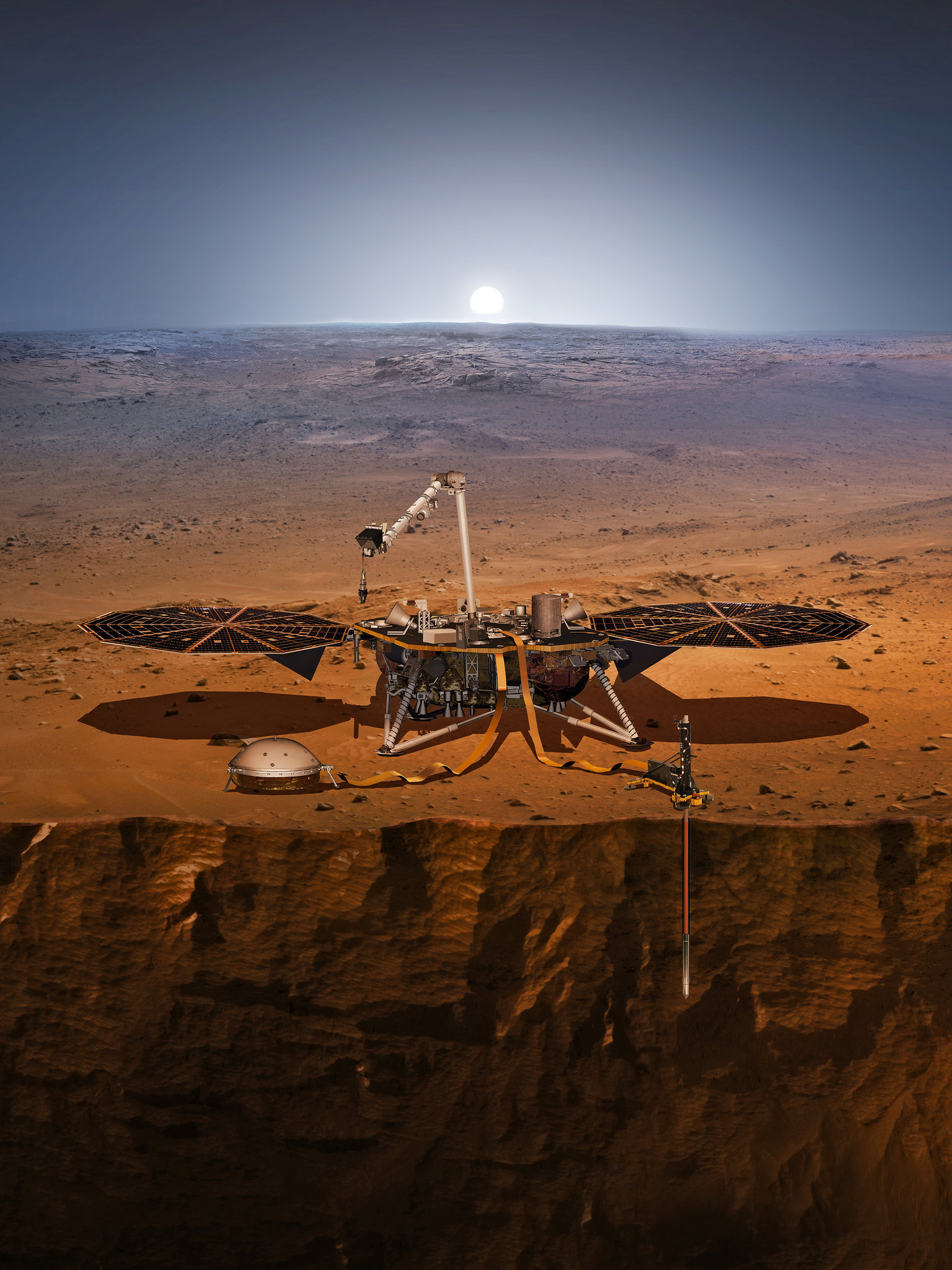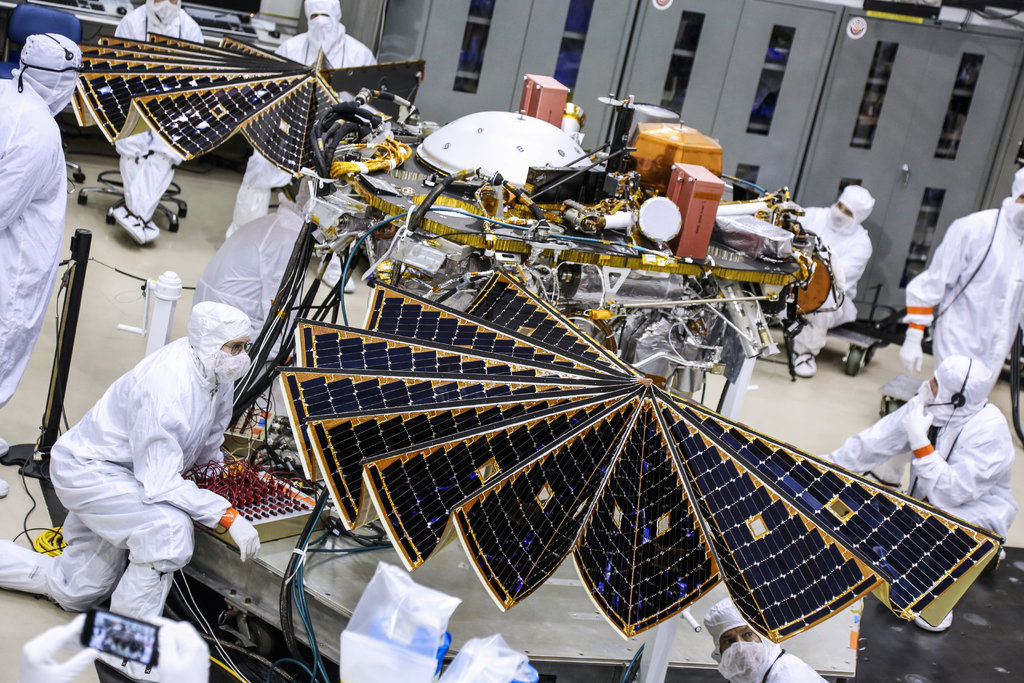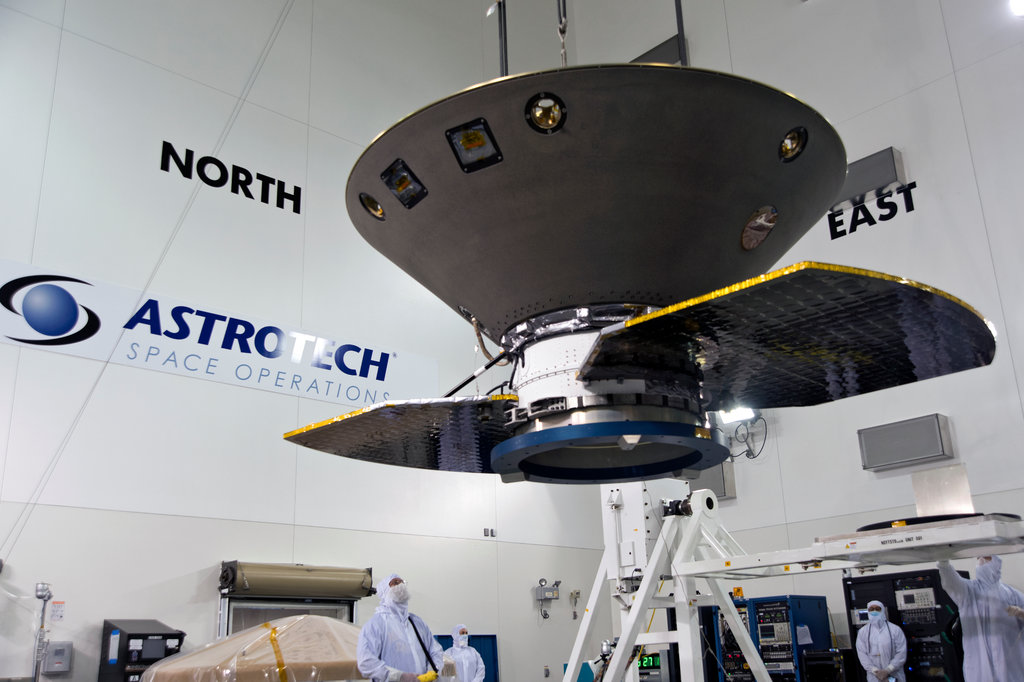Winston
Lorenzo von Matterhorn
- Joined
- Jan 31, 2009
- Messages
- 9,560
- Reaction score
- 1,748
InSight is scheduled to launch under pre-dawn skies from Vandenberg Air Force Base on the central coast of California in May 2018.
https://mars.nasa.gov/insight/mission/timeline/launch/
The mission's launch period is May 5 through June 8, 2018, with daily launch windows that last two hours per day. Launch opportunities are set five minutes apart during each date's launch window. The first opportunity begins at approximately 4:00 a.m. Pacific Standard Time on May 5.
InSight will launch from Launch Complex 3 and ride atop an Atlas V-401 rocket provided by United Launch Alliance, Centennial Colorado, a joint venture of Boeing Co. and Lockheed Martin Corp.
The Atlas V is one of the biggest rockets available for interplanetary flight. This is the same type of rocket that launched the Mars Reconnaissance Orbiter in 2005.
The launch is only the beginning; the trip to Mars takes about six months. The journey is about 301 million miles (485 million kilometers).
No matter at what particular time and date InSight launches during its launch windows, its date with Mars is set for Nov. 26, 2018.
InSights second chance
https://www.thespacereview.com/article/2953/1
What doomed InSights [planned 2016] launch was a persistent vacuum leak in that [made by the French Space Agency (CNES)] seismometer, known as the Seismic Experiment for Interior Structure (SEIS). You might ask, Why do you have a vacuum system on a seismometer? Banerdt said. That vacuum is necessary, he said, because of the extreme sensitivity of the instruments very broad band (VBB) sensor, which can detect displacements as small as one hundredth of a nanometer.
Were measuring pretty small things on the surface of Mars, and in order to do this, this beast here has to be operating in a pretty good vacuum, he said. That vacuum, he added, has to be one hundredth of a millibar or better.
To achieve that vacuum, three VBB sensors are placed into a quasi-spherical container that looks a little bit like a small roaster or a similar cooking pan. Its about the size of your head, he said. Several feed-throughs allow wires to get from the sensors inside the vacuum container to the outside. Those feed-throughs have caused Banerdt and others involved with InSight no end of headaches.
The first vacuum leak, he said, was detected in August and linked to a 37-pin electrical feed-though, and later localized to one of the pins. That was sealed and, by early October, had stopped the leak.
Days later, though, technicians found a second leak on another pin of the same feed-through, although only about one-tenth as strong as the first one. A sealing compound was used to stop the leak, as with the first one, only to have the leak resume days later after cycling the instrument through cold temperatures. By early November, that leak was resolved by encapsulating the entire feed-through.
Then, days after resolving the second leak, workers found a third one linked to the pinch off of an evacuation tube used to draw the vacuum. A new tube was welded to the sphere in early December. But, on December 20, a fourth leak was detected during another cold cycle test that was eventually traced back to the same feed-through that caused the initial leaks.
By that time, it was too late to fix the instrument in time for a March launch. That was going to take us about three or four weeks beyond our launch, if everything went well, so that was not in the cards, Banerdt said.
The instrument redesign and delayed launch date will add $153.8 million to the initial $675 million budget, NASA officials said in a statement.
https://insight.cnes.fr/en/INSIGHT/GP_seis.htm
[video=youtube;LKLITDmm4NA]https://www.youtube.com/watch?v=LKLITDmm4NA[/video]
[video=youtube;vh7bnSc6a_Q]https://www.youtube.com/watch?v=vh7bnSc6a_Q[/video]
https://mars.nasa.gov/insight/mission/timeline/launch/
The mission's launch period is May 5 through June 8, 2018, with daily launch windows that last two hours per day. Launch opportunities are set five minutes apart during each date's launch window. The first opportunity begins at approximately 4:00 a.m. Pacific Standard Time on May 5.
InSight will launch from Launch Complex 3 and ride atop an Atlas V-401 rocket provided by United Launch Alliance, Centennial Colorado, a joint venture of Boeing Co. and Lockheed Martin Corp.
The Atlas V is one of the biggest rockets available for interplanetary flight. This is the same type of rocket that launched the Mars Reconnaissance Orbiter in 2005.
The launch is only the beginning; the trip to Mars takes about six months. The journey is about 301 million miles (485 million kilometers).
No matter at what particular time and date InSight launches during its launch windows, its date with Mars is set for Nov. 26, 2018.
InSights second chance
https://www.thespacereview.com/article/2953/1
What doomed InSights [planned 2016] launch was a persistent vacuum leak in that [made by the French Space Agency (CNES)] seismometer, known as the Seismic Experiment for Interior Structure (SEIS). You might ask, Why do you have a vacuum system on a seismometer? Banerdt said. That vacuum is necessary, he said, because of the extreme sensitivity of the instruments very broad band (VBB) sensor, which can detect displacements as small as one hundredth of a nanometer.
Were measuring pretty small things on the surface of Mars, and in order to do this, this beast here has to be operating in a pretty good vacuum, he said. That vacuum, he added, has to be one hundredth of a millibar or better.
To achieve that vacuum, three VBB sensors are placed into a quasi-spherical container that looks a little bit like a small roaster or a similar cooking pan. Its about the size of your head, he said. Several feed-throughs allow wires to get from the sensors inside the vacuum container to the outside. Those feed-throughs have caused Banerdt and others involved with InSight no end of headaches.
The first vacuum leak, he said, was detected in August and linked to a 37-pin electrical feed-though, and later localized to one of the pins. That was sealed and, by early October, had stopped the leak.
Days later, though, technicians found a second leak on another pin of the same feed-through, although only about one-tenth as strong as the first one. A sealing compound was used to stop the leak, as with the first one, only to have the leak resume days later after cycling the instrument through cold temperatures. By early November, that leak was resolved by encapsulating the entire feed-through.
Then, days after resolving the second leak, workers found a third one linked to the pinch off of an evacuation tube used to draw the vacuum. A new tube was welded to the sphere in early December. But, on December 20, a fourth leak was detected during another cold cycle test that was eventually traced back to the same feed-through that caused the initial leaks.
By that time, it was too late to fix the instrument in time for a March launch. That was going to take us about three or four weeks beyond our launch, if everything went well, so that was not in the cards, Banerdt said.
The instrument redesign and delayed launch date will add $153.8 million to the initial $675 million budget, NASA officials said in a statement.
https://insight.cnes.fr/en/INSIGHT/GP_seis.htm
[video=youtube;LKLITDmm4NA]https://www.youtube.com/watch?v=LKLITDmm4NA[/video]
[video=youtube;vh7bnSc6a_Q]https://www.youtube.com/watch?v=vh7bnSc6a_Q[/video]







